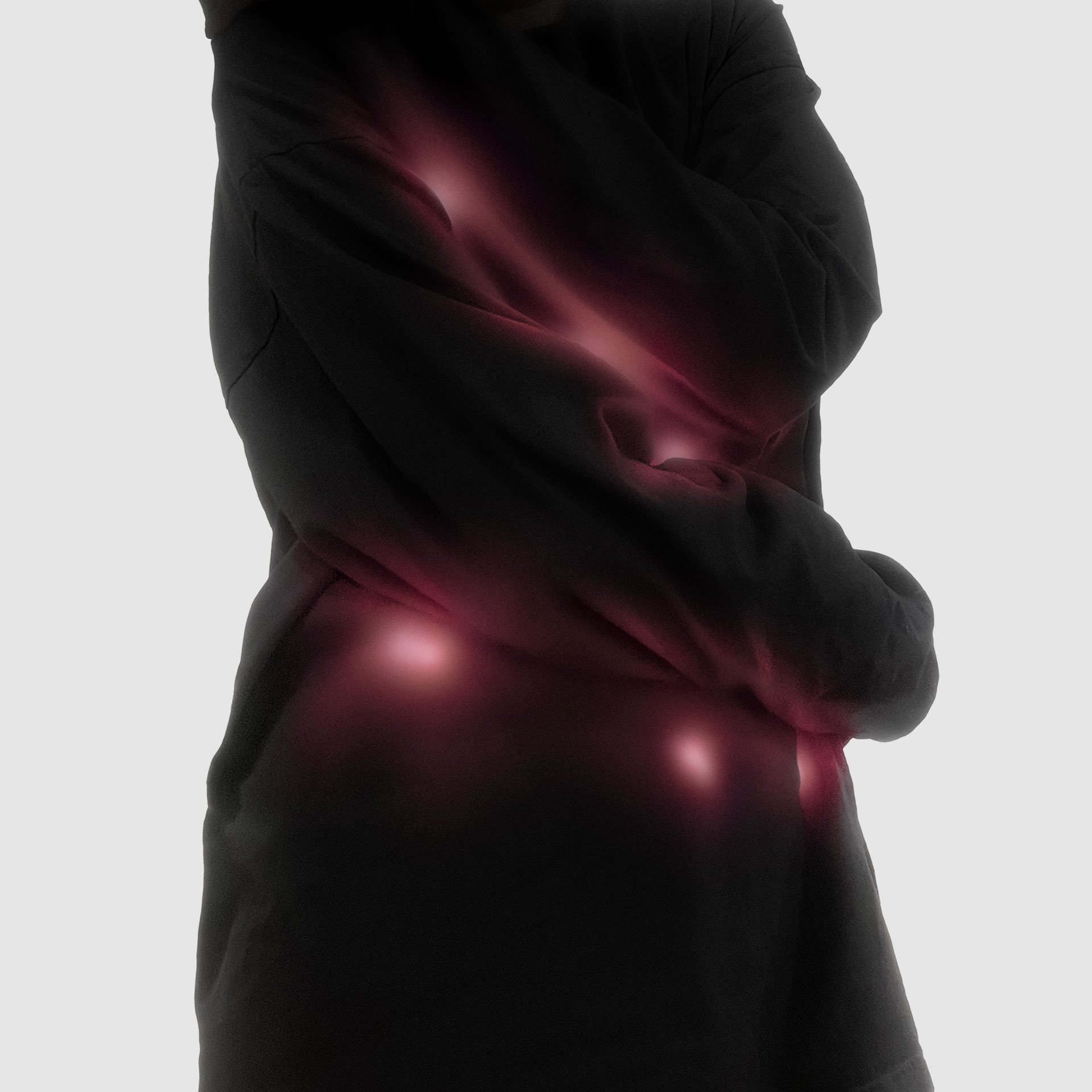NETWORKED INTIMACY
Role: Research
Year: 2023
City: Amsterdam
Our devices are increasingly becoming the primary medium through which we relate to one another. This research paper was done in collaboration with Modem, an office for design and innovation, and industrial designer Maxime le Grelle, to explore the tension between technology and human connection. Networked Intimacy envisions the potential of interpersonal relationships in the connected age through a series of speculative hardware interventions. Text by Anastasia Fedorova, photos by Charlie Dixon.

NETWORKED INTIMACY
Our devices are increasingly becoming the primary medium through which we relate to one another. Modem partnered with Morgan Catalina, holistic sexuality educator, and industrial designer Maxime le Grelle to explore the tension between technology and human connection. Networked Intimacy envisions the potential of interpersonal relationships in the connected age through a series of speculative hardware interventions.
What comes to mind when you think of intimacy? What does closeness – with a friend, family member, or romantic partner – feel like? Waking up in the middle of the night and wrapping your arm around your partner, quietly trying to sync your breath to theirs? Saying goodbye to your parents at the airport, feeling, on a sharp physical level, how the distance between you gradually expands? In a department store, picking up a perfume that an ex used to wear, as the scent momentarily brings memories to the surface?
As humans, we yearn to be intimate with others. We crave touch, embraces, shared emotions and stimulating conversations. Human intimacy is deeply embodied and multi-sensory – we respond to voices, touch and scent as much as we do to visual cues. Today interpersonal intimacy is also deeply technological: enabled by smartphones, laptops, apps and video calls. Not only is a text message notification from a loved one capable of producing a dopamine hit – we are now able to have relationships (friendly, professional, romantic) which are carried out entirely online, without ever meeting face-to-face. But in our increasingly digitised reality, are we truly satisfied with the level of connection current technology is able to provide?
Continue reading....



BREATHING PODS —
With digital technologies constantly competing for our attention, people are increasingly distracted in each other's company. It is scientifically proven that during a shared experience, people unconsciously synchronize bodily functions like heartbeat and breathing.
The breathing pods helps to create a digitally-triggered version of this embodied connection. The pod’s shape and light expand and decrease in sync with the person's conversational partner — through holding their respective pods, two people can synchronize their breathing and establish a focused connection.
With digital technologies constantly competing for our attention, people are increasingly distracted in each other's company. It is scientifically proven that during a shared experience, people unconsciously synchronize bodily functions like heartbeat and breathing.
The breathing pods helps to create a digitally-triggered version of this embodied connection. The pod’s shape and light expand and decrease in sync with the person's conversational partner — through holding their respective pods, two people can synchronize their breathing and establish a focused connection.
SCENT DIFFUSING COLLAR —
Scent is one of the most direct triggers for memories and emotions. Scientists believe that smell and memory are so closely linked because the anatomy of the brain allows olfactory signals to get to the limbic system very quickly. But in today’s communication technology, our sense of smell is often completely neglected.
The collar releases a scent when interacting with others digitally. For the user, each unique scent is connected to a particular person and represents their intimate connection, such as the scent of their child's hair, their lover's skin or their home.
Scent is one of the most direct triggers for memories and emotions. Scientists believe that smell and memory are so closely linked because the anatomy of the brain allows olfactory signals to get to the limbic system very quickly. But in today’s communication technology, our sense of smell is often completely neglected.
The collar releases a scent when interacting with others digitally. For the user, each unique scent is connected to a particular person and represents their intimate connection, such as the scent of their child's hair, their lover's skin or their home.
TOUCH EMITTING PATCHES —
The ritual of active greeting is declining in our increasingly digital communication. A physical greeting, a hug, and a handshake help create intimate connections through the production of the oxytocin hormone, which is instrumental to social bonding.
The touch patches can be adhered to various places on the skin and worn under clothing. The liquid heat fluid flowing through the patch emits the feeling of touch or greeting from a distance.
The ritual of active greeting is declining in our increasingly digital communication. A physical greeting, a hug, and a handshake help create intimate connections through the production of the oxytocin hormone, which is instrumental to social bonding.
The touch patches can be adhered to various places on the skin and worn under clothing. The liquid heat fluid flowing through the patch emits the feeling of touch or greeting from a distance.
